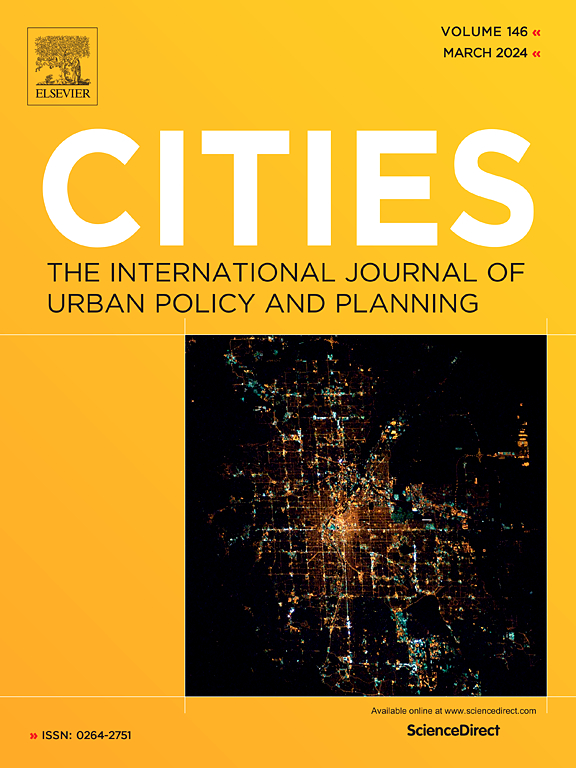中国城市群大气污染传输网络:驱动因素与脆弱性
IF 6.6
1区 经济学
Q1 URBAN STUDIES
引用次数: 0
摘要
大气污染的跨区域传播是一项复杂而紧迫的环境挑战。结合复杂网络分析、二次分配程序分析和级联失效理论,研究了中国11个城市群大气污染传输网络的结构、驱动因素和脆弱性。研究发现,各城市群均表现出高度的区域集中度和功能专业化,具有鲜明的城市角色。珠江三角洲具有较强的污染双向传递,而兰西城市群和哈长城市群具有较低的网络密度和互易性,以单向流动为主。东部发达地区持续占据核心位置,中部地区污染网络呈现分散化趋势,污染传播中心向中西部地区转移。通过质量评估确定的关键驱动因素包括经济发展、植被覆盖和环境监管。级联故障分析表明,高中间中心性和高权重边缘的节点是关键漏洞;在这些战略要点上进行有针对性的干预可以有效地减少污染物的扩散。本研究对污染传播的“结构-驱动-脆弱性”机制提供了综合的理论见解,并为可持续区域治理、识别关键节点和制定有针对性的空气质量管理策略提供了实践指导。本文章由计算机程序翻译,如有差异,请以英文原文为准。

Air pollution transmission networks in China's urban agglomerations: Drivers and vulnerabilities
The cross-regional transmission of air pollution is a complex and urgent environmental challenge. Integrating complex network analysis with Quadratic Assignment Procedure (QAP) analysis and cascade failure theory, we examine the structure, drivers, and vulnerabilities of air pollution transmission networks across 11 Chinese urban agglomerations. We find that each agglomeration demonstrates high regional concentration and functional specialization, with distinct city roles. The Pearl River Delta exhibits strong bidirectional pollution transmission, while the Lanxi and Harbin-Changchun agglomerations show lower network density and reciprocity, mainly featuring unidirectional flows. Developed eastern regions consistently occupy core positions, while central China's network displays a decentralizing trend, shifting the pollution transmission center towards the central and western regions. Key drivers identified via QAP include economic development, vegetation coverage, and environmental regulation. Cascade failure analysis highlights that nodes with high betweenness centrality and high-weight edges are crucial vulnerabilities; targeted interventions at these strategic points can effectively reduce pollutant spread. This study offers integrated theoretical insights into the “structure-driver-vulnerability” mechanism of pollution transmission and provides practical guidance for sustainable regional governance, identifying critical nodes and developing targeted air quality management strategies.
求助全文
通过发布文献求助,成功后即可免费获取论文全文。
去求助
来源期刊

Cities
URBAN STUDIES-
CiteScore
11.20
自引率
9.00%
发文量
517
期刊介绍:
Cities offers a comprehensive range of articles on all aspects of urban policy. It provides an international and interdisciplinary platform for the exchange of ideas and information between urban planners and policy makers from national and local government, non-government organizations, academia and consultancy. The primary aims of the journal are to analyse and assess past and present urban development and management as a reflection of effective, ineffective and non-existent planning policies; and the promotion of the implementation of appropriate urban policies in both the developed and the developing world.
 求助内容:
求助内容: 应助结果提醒方式:
应助结果提醒方式:


